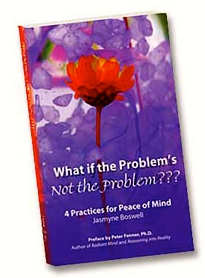Big ideas come from forward-thinking people who challenge the norm, think outside the box, and invent the world they see inside rather than submitting to limitations.
~T.D. Jakes
Get Out of the Box
A friend of mine had her artist boyfriend over for dinner. When they finished eating, she started to clear the table. He said, “Wait! Look at how beautiful that looks.” He was referring to the after-dinner view of their table. Where she only saw clutter, he saw a beautiful creation.
In my house, he would have been labeled “crazy.” After dinner, the table got cleared and the dishes washed. That was the “right” way to do things. It doesn’t take much to set up a system of right and wrong. We are entrained from an early age. I asked a few of my friends to give me examples of rights and wrongs they grew up with. Putting them all together, my list started with: there’s a right way to load the dishwasher and a wrong way; there’s a right way to mow the lawn and a wrong way; a right way to fold towels; a right way to shovel snow; a right time to do your homework; the right people to hang out with; the right college to enroll in; the right career to choose; and the list goes on and on.
The bible for many of our parents was entitled “They say.” They say it’s not a safe place; they say, drafts cause colds; they say – – – – – -. ”When I got old enough to question everything, I asked my mother who “they” were. She gave me a look of puzzlement. That look gave me my answer. She had never asked the question and hadn’t a clue. What I have come to discover, thank God, is that there are as many ways to do things, as there are people who do them. Pigeonholing every thing or action as “right or wrong” is simply a form of control.
When we know what’s right and what’s wrong, there are no surprises and we can rest in the safety of thinking we know and have the answers. This belief of everything being either “right or wrong” became for many, our adult version of a security blanket. We held on to it long after we left our parent’s barrage of “shoulds and shouldn’ts,” another version of right and wrong, but basically the same. We moved out of our parent’s home and became our own dilatants. But like a security blanket, that belief system eventually has to disintegrate.
Luckily, as we mature and become more confident, most of us find ourselves in “out of the box” situations and have to give it up. These situations don’t fit the old mold and stimulate our growth and creative thinking. (wonderful for us writers.) If we can’t pigeonhole something, we have to use our right brains, our creative minds to try and understand. Questioning is a start, but can every question be answered or every problem solved? Where would the element of surprise and delight live if that were so? We’d be bored out of our minds.
There was a movie I remember seeing where the main character dies and winds up in a place where he gets everything he ever wanted. After a while, he says “Get me out of here. I’d rather be in hell.” And a voice answers, “Where do you think you are?”
When we clear the lens of “having to know” from our minds, we start to see all the possibilities that lie before us. The unpredictability keeps us present to the moment and very alive. Taking a vacation from the known and predictable, we become childlike, filled with curiosity and wonderment.
Try putting that fresh presence and aliveness into your writing, and you’ll have a winning story. Just saying . . . . .
Enjoy

Blog Coaching Miscellaneous themes Tips for Writing A Book
Get Out of the Box

